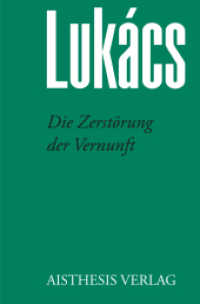- ホーム
- > 洋書
- > ドイツ書
- > Social Sciences, Jurisprudence & Economy
- > Politics, Society, Work
- > public administration
Full Description
Political meaning in architecture has been a subject of interest to many critics and writers. The most notable of these include Charles T. Goodsell and Kenneth Frampton. In Goodsell's (1988) statement "Political places are not randomly or casually brought into existence" (ibid, p. 8), the stipulation is that architecture has been used very deliberately in the past to bolster connotations of power and strength in cities representative of larger nations and political movements. The question central to this book relates to how this can be achieved. Goodsell argues that any study of the interplay between political ideology, architecture, and identity, demands a place imbued with political ideas opposed to "cold concepts and lifeless abstractions" (Goodsell 1988, p. 1). As a means through which to examine and evaluate the ways in which the development of cities can be influenced by political and ideological tendencies, this book focuses on Berlin, as a political discourse, given its significant destruction and reorganisation to reinstate its identity in the context of geopolitics and the advent of globalisation.
Contents
Introduction: Berlin Now!.- Chapter 1. Berlin's Earlier Development: Power and Economic Growth.- Chapter 2. Architecture and Identity under National Socialism: Modernism versus Monumentalism.- Chapter 3. Architecture and Identity during the Cold War: Formation of the East-West Division.- Chapter 4. Architecture and Identity after Reunification: Developing a Democratic and Economic Capital.- Chapter 5. Conclusions: A City Awaits.- Index.








